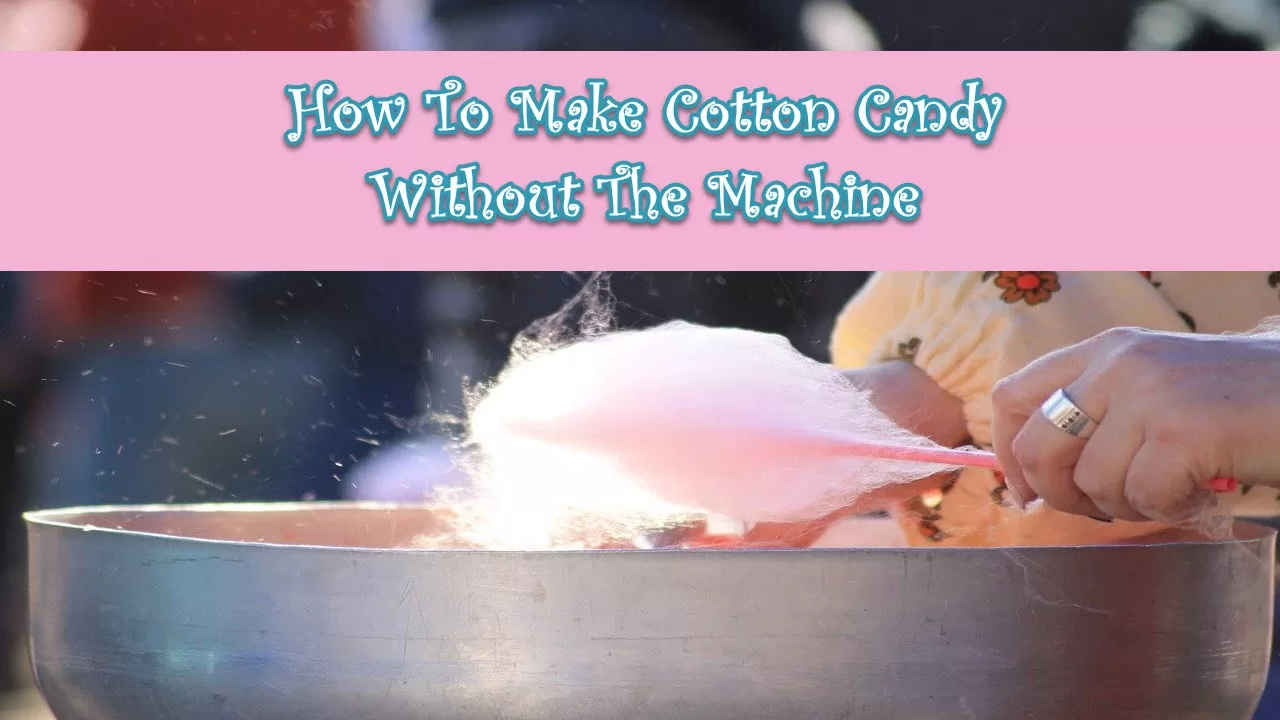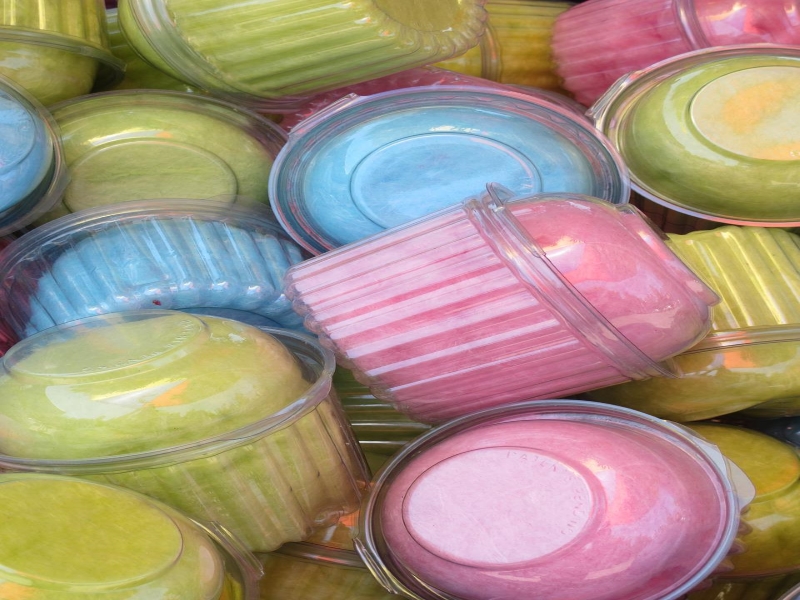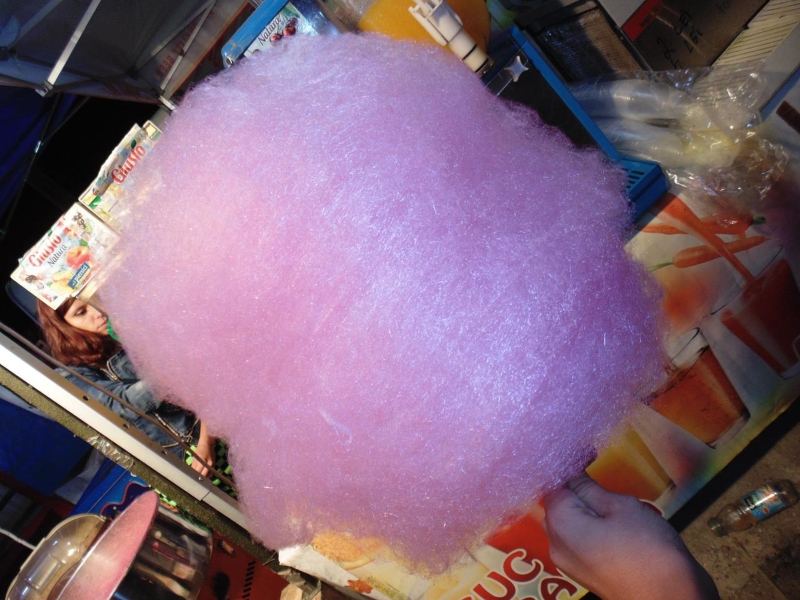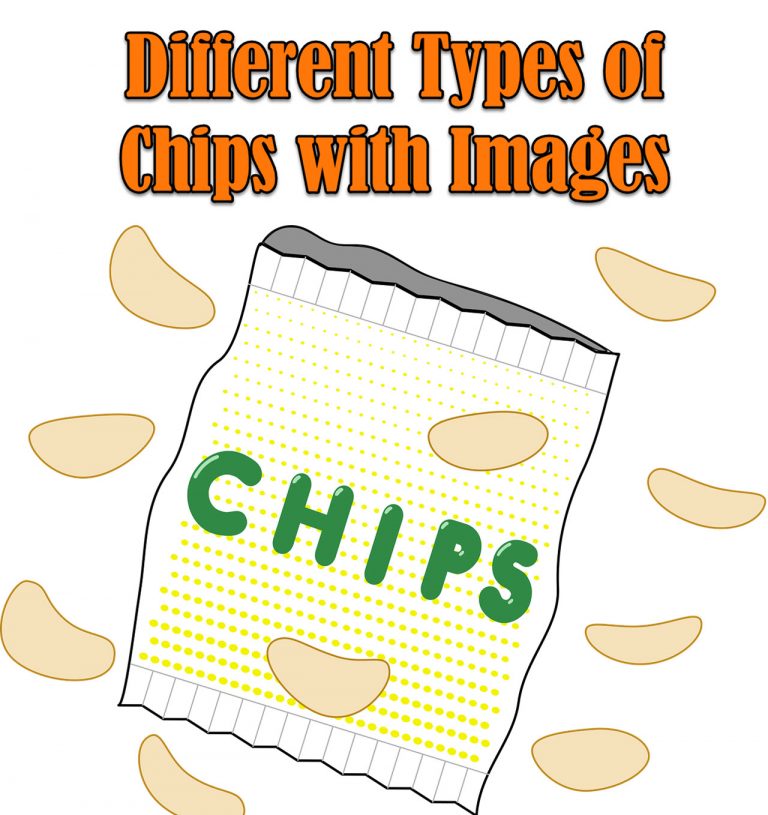How To Make Cotton Candy Without The Machine

We remember our childhood when we think about cotton candy. To enjoy some good old cotton candy, though, you don’t actually need to be a child or a child in heart. It is a favorite that will continue to be well-liked for decades to come because of its distinctive texture and flavor. In fact, it would be difficult to find someone who does not enjoy cotton candy.
You can produce cotton candy without using a cotton candy machine, did you know that? You got that correctly. You don’t need to visit amusement parks just to enjoy one of these delectable treats.
Making cotton candy without a machine isn’t as difficult as you may imagine. Homemade cotton candy tastes just as good even if it might not look precisely like what you’re used to. Additionally, it’s a fun opportunity for youngsters to help out in the kitchen and get their hands dirty, and it comes with a tasty reward.
If you are interested in making your own cotton candy, scroll down and continue reading.
Make Cotton Candy Without The Machine

Cotton Candy
Cotton candy is also known as fairy floss and candy floss. This delicious food is a cotton-like confection made of spun sugar. Usually, it only has small quantity of flavoring or food coloring.
Typically, it is produced by centrifugally spinning heated, liquefied sugar through tiny holes until it quickly cools and solidifies again into tiny strands. It is frequently offered in a plastic bag, on a stick, or in a paper cone at fairs, circuses, carnivals, and festivals.

Cotton Candy Production
A spinning head containing a tiny “sugar reserve” bowl, into which a charge of colored granulated sugar, or separate colored sugar and food coloring is put, is a typical component of cotton candy-making machines. The sugar is melted by heaters close to the head’s rim, and centrifugal force forces it out of small holes. Granulated sugar used in baking has fine crystals that spin out unmelted, while rock sugar crystals are too large to properly contact the heater, slowing the creation of cotton candy. Colored sugar packaged specifically for the method is milled with melting characteristics and a crystal size optimized for the head and heated holes.
The molten sugar hardens in the air and falls into a bigger bowl that completely envelopes the rotating head. After a while of procedure, the cotton-like product begins to accumulate on the inner walls of the larger bowl. At this point, machine operators spin a stick or cone around the rim of the large catching bowl to collect the sugar strands into portions that are served on stick or cone or in plastic bags. The operator refills the sugar reserve bowl with new feedstock when it empties. The substance is sensitive to humidity, and in humid summer climates, the process can be messy and sticky.
Vending machines that autonomously dispense the product in single doses, created in Taiwan, and lit or luminous sticks are examples of modern inventions in cotton-candy technology.

Things You Need To Know About Cotton Candy
According to a number of sources, cotton candy first appeared in Europe in the 19th century in the form of spun sugar. Spun sugar was not widely accessible at the time since it required a lot of effort and was costly. Some claim that spun sugar dates back to the 15th century and originated Italy.
William Morrison, a dentist, and John C. Wharton, a confectionery, created machine-spun cotton candy in 1897. Fairy Floss, their creation, was first made available to the general public during the 1904 World’s Fair.
The first automated machine for cotton candy making debuted in 1978. Since then, other variations with sizes ranging from counter-top to party- and carnival-size have been developed. Modern commercial machines contain storage for additional flavors, bowls that spin at 3,450 revolutions per minute, and can store up to 3 pounds (1.4 kg) of sugar.
In India cotton candy is also known as grandma’s hair. United Arab Emirates and Saudi Araia, it is known as “girl’s hair”, and in Australia, it is known as “fairy floss”. Persian cotton candy is another name for the spun-sugar treat pashmak, which is popular in Iran.
National Cotton Candy Day is observed on December 7 in the US.
There are two methods for making cotton candy at your house. It may be made by hand-pulling or hand-spinning. The way you end up making the “strings” that make up the cotton candy itself is where the primary distinction between the two approaches lies.

How To Make Hand Spun Cotton Candy Recipe
Ingredients
- 4 cups sugar
- 1 cup water
- 1 cup corn syrup
- 1 tsp salt
- 1 tsp raspberry extract / or other flavored extract that you prefer
- 2 drops food coloring, preferably pink food coloring for a classic cotton candy color.
Instructions
- Heat a saucepan to a medium heat temperature, and add the water, corn syrup, sugar, and salt to the pan in any order. The mixture should then be kept warm in the pan until all of the sugar has melted into the mixture. You need the mixture to be at a precise temperature of around 320°F. Scrape the syrup back down to the mixture if it spills over the edges of the saucepan. By preserving every last drop of the syrup, you also spare yourself the trouble of having to subsequently deal with sugar crystals growing in the saucepan.
- The rest of the ingredients should now be added once the mixture has been created. Transfer the heated liquid to a heatproof container so you can thoroughly mix it. Then, while continuously stirring the ingredients, add both the extract and food coloring. It’s necessary to continuously mix it during this process and to avoid stopping for longer than a few seconds. If you leave it too long, the mixture will start to harden and you won’t be able to complete the process.
- Put some parchment paper down where you’re working as soon as you’ve combined everything. You’ll do the spinning of the candy into the completed cotton candy here.
- Onto the parchment, start dripping lines of the mixture. In the mixing basin, put a whisk. For a short period, let it drop on the bowl’s rim before letting the remaining mixture on the whisk drip directly onto the parchment.
- Make lines of the syrup that is dripping on the paper as thin as you can while moving at a pace that is both slow enough to thin the drip and quick enough to prevent it from breaking. Continue until the lines are starting to solidify or you have used up all of the mixture.
- After that, wrap a lollipops stick in the syrup lines. Once the parchment is complete with a fair number of thin strands, you may start wrapping it around a lollipop stick. Simply maintain a constant pace while rolling the stick on the lines, making sure that the syrup is always attached to the lollipop stick to prevent breakage.
- You’re basically done once you’ve spun every last drop of syrup onto the lollipops’ sticks. There isn’t much else you can do with the candy besides consume it while it’s still warm or store it in a tight container to keep moisture off of it.

Hand-Pulled Cotton Candy Recipe
Ingredients
- 4 1/3 cups sugar
- 1 tbsp vinegar
- 2 cups water
- Corn starch
- 1 1/2 cup corn syrup
- Food coloring -optional
Instructions
- Similar to making hand-spun cotton candy, you combine sugar, water, and corn syrup in a hot pan along with vinegar and food coloring. Boil the mixture, stirring gently, to a temperature of about 268°F. The mixture should be cooled in containers until it reaches room temperature.
- When you’re finished, sprinkle some corn starch on your work area and then pour the mixture on top of it. Making a hole in the center of the mixture, you roll it in the corn starch and begin pulling it into strings.
- You should have some thin and delectable hand-pulled cotton candy after pulling 10–14 times. To improve the flavor, you may freeze this.
Conclusion
Whatever method you use in making cotton candy, the treat will still taste delicious. It can definitely satisfy your sweet tooth. Make sure to brush your teeth after eating to avoid cavities.





